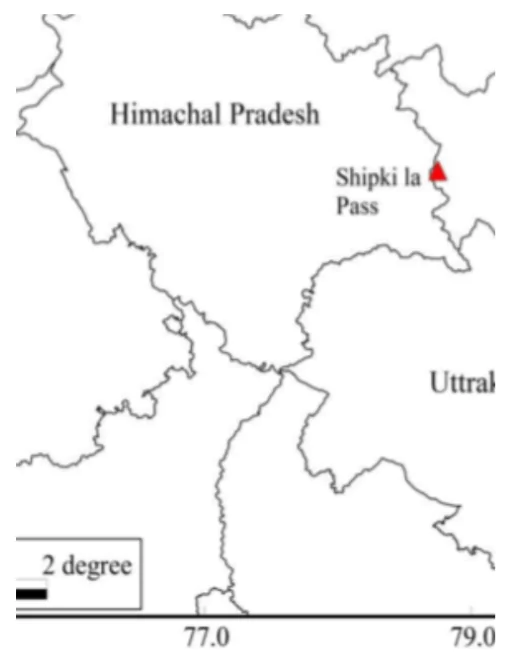Himachal Pradesh has opened the Shipki La pass to domestic tourists, a step which locals hope will revitalise tourism and trade.
About the Shipki La Pass

- Location: Shipki La is a motorable mountain pass located in the Kinnaur district of Himachal Pradesh.
- Altitude: It sits at an elevation of 3,930 metres and connects India with Tibet (now part of China).
- The old name of Shipki La was Pema La, or Shared Gate, also known as Shared Pass.
Historical Importance of the Pass
- Centuries-Old Trade Route: Functioned as a vibrant Indo-Tibetan trade corridor since at least the 15th century.
- Key Commodities Traded:
-
- Imports from Tibet: Wool, yaks, turquoise, gold, religious items.
- Exports from India: Grains, spices, copper tools, timber.
- Supported local economies, especially artisans and farmers of Kinnaur.
Strategic & Geopolitical Significance
- India-China Border Point: Shipki La is one of the few official border passes between India and Tibet.
- Border Surveillance: It serves as a sensitive point for monitoring cross-border movement and maintaining national security.
- Alternative Route to Kailash Mansarovar: Reopening the pass could shorten the Delhi-Mansarovar pilgrimage route by 14 days, easing movement for pilgrims.
Cultural and Spiritual Connectivity
- Shared Buddhist Heritage: Communities on both sides follow Tibetan Buddhism, with overlapping festivals, monastic traditions, and spiritual practices.
- Folklore-Based Trust: Historic trade was based on sacred oaths rather than treaties — symbolizing deep community bonds.
- Common Lifestyles: Both Indian and Tibetan populations are pastoralist, with shared surnames and traditions (e.g., Namgyal).
Potential for Religious Tourism
- Kailash Mansarovar Access: Pass could enable smoother, quicker pilgrimages to this sacred site.
- Revival of Heritage Tourism: Opening the pass invites interest in Buddhist circuits and local Kinnauri culture.
Soft Diplomacy & Trust-Building
- People-to-People Diplomacy: Reopening Shipki La can serve as a model for low-tension cross-border engagement.
- Non-State-Led Peace Corridor: Encourages bottom-up diplomacy rooted in shared history and development goals.
Why Was Trade Stopped through Shipki-La?
- Geopolitical Disruptions:
-
- Sino-India War (1962): First major disruption.
- Doklam Standoff (2017): Tensions resurfaced.
- Galwan Conflict (2020): A physical confrontation between Indian and Chinese troops.
- As a result, cross-border trade and travel were halted, even though local communities depended heavily on it.
Conclusion
Shipki La Pass is more than a trade route, it’s a symbol of shared culture, peace, and history between India and Tibet. Its reopening for tourism signals hope for a revived people-centric diplomacy, grounded in mutual respect and cultural continuity.
![]() 17 Jun 2025
17 Jun 2025


